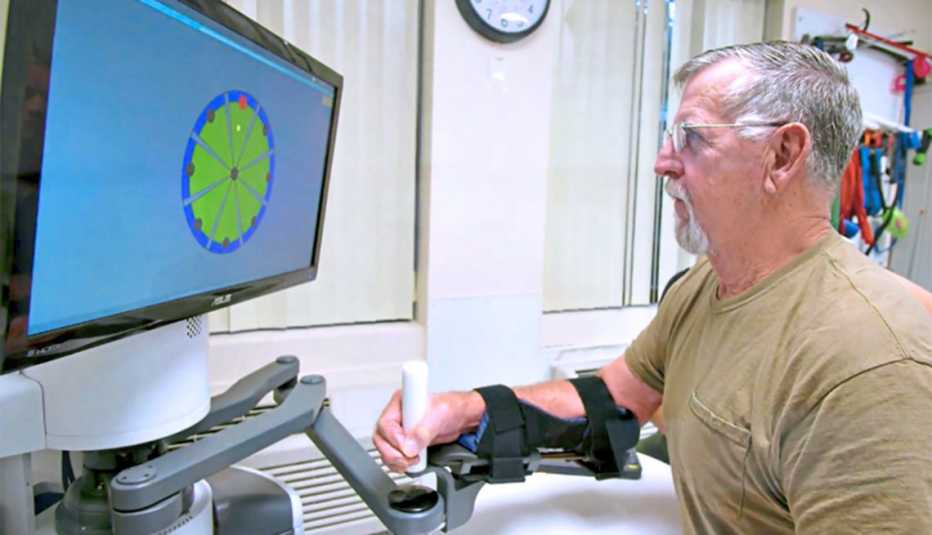Staying Fit
The news is full of ‘promising’ developments that may ‘one day’ lead to a brighter, healthier future. But for our annual AARP focuses on 'game-changing' medical breakthroughs in vision, heart health and more survey of the latest medical breakthroughs, we decided to focus on game changers that are improving lives today. Each of these astounding new technologies and treatments is available, or will be in the near future, to make your life, and the lives of millions of other Americans, better.
Mark Witman and his son, Aaron, celebrate baseball season every year by watching the movie Field of Dreams and playing catch in Witman’s backyard in Greencastle, Pennsylvania. Worsening symptoms of his Parkinson’s disease, however, were making the decades-old tradition “really difficult,” says Witman, 59. But after undergoing incision-less brain surgery called focused ultrasound in January 2022, he says throwing the ball was once again “real smooth.”


Like a magnifying glass concentrating sunlight, focused ultrasound aims beams of sound energy deep into the brain, heating up and destroying cells associated with the movement problems in both Parkinson’s disease and essential tremor, a nervous system disorder that also causes involuntary shaking. The procedure doesn’t cure the underlying causes of these conditions, which together affect at least 8 million Americans, but research shows this FDA-approved procedure can calm shaking, stiffness and other movement problems that interfere with everyday activities. In a recent study, focused ultrasound reduced tremors by 38 to 50 percent for people with essential tremor.


AARP Membership— $12 for your first year when you sign up for Automatic Renewal
Get instant access to members-only products and hundreds of discounts, a free second membership, and a subscription to AARP the Magazine.
Another study found it also eased tremors, muscle rigidity and uncontrolled movements caused by the Parkinson’s medication levodopa by about 76 percent. Lingering side effects in one study included numbness and tingling (9 percent of users), imbalance or unsteadiness (4 percent), and muscle weakness or walking disturbance (2 percent each). Focused ultrasound is best for tremors that affect one side of the body, says Howard M. Eisenberg, M.D., a professor of neurosurgery at the University of Maryland School of Medicine, who performs the procedure using a focused ultrasound system called the Exablate Neuro. “Helping one side can have a major effect on quality of life.”
Another Parkinson’s treatment, deep brain stimulation, can relieve symptoms on both sides of the body, but it carries a higher risk of infection and involves threading electrodes into the brain through holes drilled in the skull. “Deep brain stimulation has distinct advantages,” Eisenberg says. “But the majority of people who choose focused ultrasound find deep brain stimulation too intrusive.”









































































